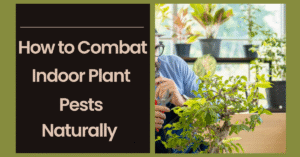Introduction
The right pot for your indoor plants goes beyond just looks—it plays a key role in the plant’s health and growth. The right pot offers proper drainage, provides enough space for root expansion, and helps maintain the right moisture balance. In addition, it complements your home decor, adding a touch of style and personality.
Why the Right Pot Matters?
The right pot ensures your plant has enough room to grow and that excess water can escape to prevent root rot. The proper container also encourages good air circulation, which is crucial for healthy root development. An incorrectly sized or poorly designed pot can lead to common issues like overwatering, poor drainage, or stunted growth.
On top of that, a beautiful pot can enhance your home’s decor, making your plants a stylish focal point.
Factors to Consider When Choosing Indoor Plant Pots
1. Pot Size
The size of the pot is one of the most important factors in selecting the right container for your plant. A pot that is too small will restrict the plant’s growth, while a pot that is too large can cause water retention and root rot.
- Ideal Size: Choose a pot that’s 1-2 inches larger in diameter than the root ball of the plant. This provides just enough space for the roots to spread without leaving excess soil that could retain too much moisture.
- Growth Considerations: Consider the growth rate of the plant. Fast-growing plants may require a slightly larger pot, while slower growers are fine with a smaller one.
2. Material of the Pot
The material of the pot affects both the plant’s health and the overall aesthetic. Here are some common pot materials and their benefits:
- Plastic Pots: Lightweight, affordable, and often equipped with drainage holes. They retain moisture longer, making them a good option for plants that prefer consistent watering.
- Terracotta Pots: These clay pots are porous and breathable, helping to prevent overwatering by allowing air to reach the roots. However, they dry out faster and may need more frequent watering. Terracotta also gives a rustic, natural look.
- Ceramic Pots: Glazed ceramic pots are elegant and come in various designs. They tend to retain moisture better than terracotta but are heavier and pricier. They are great for plants that need consistent moisture.
- Wooden Pots: Offering a rustic charm, wooden pots are natural and stylish. However, they can be prone to rotting over time, so ensure they are treated or lined with a plastic insert.
- Fiberglass and Resin Pots: Durable and lightweight, these pots mimic the appearance of heavier materials like stone and are perfect for larger plants.
3. Drainage is Essential
Good drainage is crucial for healthy plant growth. Without proper drainage, water can accumulate at the bottom of the pot, leading to root rot and other problems.
- Drainage Holes: Ensure that the pot has adequate drainage holes. If it doesn’t, consider drilling holes yourself or using it as an outer decorative pot with an inner container that has holes.
- Tray or Saucer: Always place a saucer or tray underneath the pot to catch excess water. This prevents water damage to your furniture and flooring.
4. Aesthetic Appeal
While functionality is key, the look of the pot should also suit your style and complement your indoor space. The right aesthetic can turn your plant into a decorative statement piece.
- Modern and Minimalistic: Choose simple, neutral-colored pots for a sleek, contemporary look. These work well in modern, minimalist interiors.
- Rustic and Bohemian: Terracotta and wooden pots provide a natural, earthy vibe that’s perfect for rustic, boho-inspired spaces.
- Bright and Bold: If you want to add a pop of color or personality, look for vibrant or patterned pots that make a bold statement in your home.
5. Pot Shape and Height
The shape of the pot also plays a role in the plant’s overall health and appearance.
- Shallow vs. Deep Pots: Shallow pots work best for plants with short roots, such as succulents, while deeper pots are ideal for plants with longer root systems, such as trees or large indoor plants.
- Tall Pots: For plants that grow vertically (like palms or snake plants), choose tall pots to provide ample space for their roots.
- Wide Pots: Plants that spread out, such as ferns or some flowering plants, will do better in wide pots that allow their roots to branch out horizontally.
6. Budget and Durability
It’s important to choose a pot that fits both your budget and your long-term plant care goals. While high-end pots made of ceramic or stone may be visually appealing, they can also be more expensive. On the other hand, plastic and fiberglass pots can be affordable, durable, and lightweight.
- Budget Consideration: If you’re on a budget, plastic or resin pots can be a great choice. They are practical and cost-effective.
- Durability: Opt for pots made of durable materials if you’re looking for long-term use. Ceramic and fiberglass pots, for example, are sturdy and can last for many years.
Conclusion Choosing the right indoor plant pot is essential for both your plant’s health and your home’s aesthetics. Consider the size, material, drainage, and style of the pot when making your decision. Remember, the right pot not only allows your plant to thrive but also enhances the beauty of your living space.


